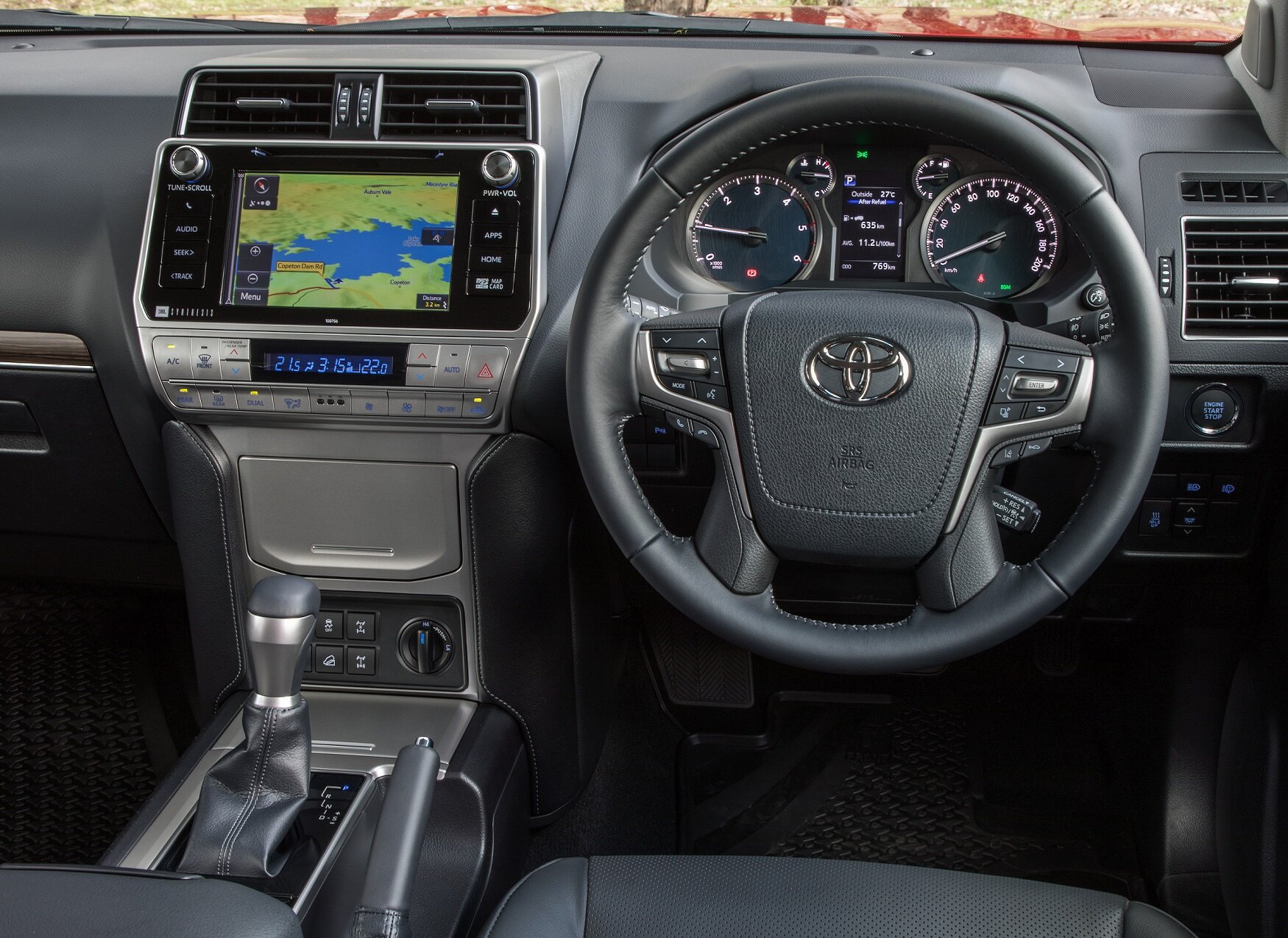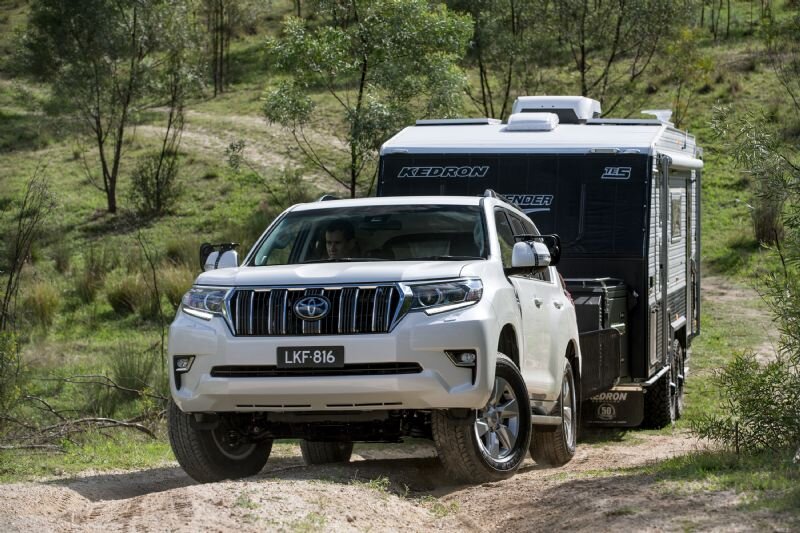Heavy towing with auto transmissions
Towing and manually selecting gears in an auto: Generally a bad idea. Not everyone agrees, because the world is full of geniuses: Just ask Dunning and Kruger.
So you wanna tow your tool trailer, boat, enormous moon-class caravan full of actual crap, whatever.
But you think, like in the good old days with your Pappy, hauling your worldly possessions around the country in a rusty old long-wheelbase Defender, you know what gear to be in and Goddammit you’re the boss and you’re gonna tell the car what’s what.
I’d suggest A) time for a reality check and B) have a cold shower before going any further, lest you give yourself an aneurysm. Or give yourself one, knock yourself out.
Firstly re automatic gearboxes; I disagree with your comment re not using the gears.
In my experience, using the gears to firstly slow down (saving brakes for when you really need them) and pre-selecting a low gear to hold the power band on steep inclines (before starting the ascent and slowing) down saves momentum and stress in the vehicle.
Secondly some advice. I have read on forums that you shouldn’t tow in 5th gear ie overdrive.
I cannot think of a reason this would be a problem but am interested in your thoughts.
- Lachlan St Clair
Well Lachy, disagreeing with me is absolutely allowed. As someone with a PhD is sociopathy, I don’t give a shit if you agree with me or not. I won’t even spend a nanosecond pondering it.
It’s in three parts, right? A) Using the transmission as a substitute for brakes, B) Holding the vehicle in the so-called ‘power band’ on ascents, and C) Why overdrive might be a bad idea when heavy towing.
Simple enough?
The Expendables
So let’s do this in order:
Descents:
I’d retort that brakes are cheap - pads are cheap. Rotors are pretty cheap. They’re also expendable, the sacrificial assassins you send in to ‘handle the situation’, with the explicit understanding they may not come back in the same condition, if at all.
Don’t be afraid to just use your brakes, conservatively. That’s what they’re there for - to keep speed in check - and yes, they wear out.
It’s up to you to manage the prevailing traffic so you don’t have to handle some extreme driving situation.
Transmissions are expensive - ‘break the bank’ expensive, in many cases. Transmissions on cars are not really designed as substitutes for brakes. Therefore, use the brakes to slow the vehicle to the desired speed, not the transmission. That’s the general idea.
Sure, you can hold the vehicle in a low-ish gear to provide some small retardation on a protracted descent. That’s not a bad idea. Just use the brakes first - to get to the target speed - to do what they were designed to do, which would be: to slow the vehicle. Using the transmission as a substitute for the brakes is, ahhh, What’s that word? ...It’s ‘fucking stupid’.
And yet so many intellectually impoverished grey nomad dickheads drive as if this is their true calling. To avoid using the brakes - by substituting the transmission. And to them I would say: You Muppets.
Look, if you’re towing something, drive conservatively. Especially if you’re driving down a mountain. But the trailer has its own brakes, generally, and the system is quite robust if you don’t abuse it.
Ascents:
Let’s address ascending now, and pre-selecting a lower gear: If you want to save what Lachy calls ‘stress in the vehicle’ during ascents - don’t tow anything. Translation: you’re towing a load, this inherently puts stress on the vehicle; it’s up to you to not overdo it and be conservative. You’re not driving a tugboat, so don’t try to pull the fucking Ruby Princess out of Darling Harbour.
Powertrain control modules are programmed by engineers who do this (towing business) for a living, to select the right gear for the prevailing load and demand. Pre-emptively selecting what you call a ‘power band’ is generally insane.
Let’s say you’re on a highway and you get to a hill. Load increases thanks to gravity. You add throttle. The powertrain module does its arithmetic, balancing load (from gravity) versus demand (how hard you’re applying the throttle).
Once it determines you’ll get a better result in a lower gear, it downshifts - which is what a bunch of brainiacs designed it to do. (They also call them ‘Sealed for Life Transmission’ but that doesn’t mean they’re invincible).
So, out of deference to the brainiacs and them understanding the system better than you, I’d let the transmission decide in the overwhelming majority of cases.
During ascents, let the computer do the thinking. It’s been designed to do that. If it needs to change back, it will. Hey, presto.
Number one at number-twos
Finally, on overdrives and towing: fifth and/or sixth gear, and heavy loads.
Gearboxes are about load and speed, right? Torque and speed. First gear gives you a lot of effort at the wheels, at low speed, for not all that much effort by the engine. It’s about mechanical advantage, like a lever.
Example: on the flat (no trailer) you can slip the clutch in first gear and get rolling, using just the torque at idle. Try doing that in fifth. Good luck. (Because fifth gives you a lot less effort at the wheels - because it’s designed for speed. Less effort; more speed.)
Effort and speed are in inverse proportion in powertrains, right? Lots of effort goes with lower speed. Lots of speed goes with low effort. Lower gears tend to be more robust, because they’re transmitting a lot of mechanical advantage.
Higher gears tend to be less robust because they’re all about low-load driving. You’re doing 100km/h with not much throttle, unladen. Then you add some heavy caravan, probably because you’re not smart enough to fly somewhere and stay in a hotel, like a civilised person.
Perhaps there’s some appeal, which I am thus far unable to fathom, to taking a dump three steps from the dining table every evening in an acoustically transparent aluminium box costing sixty grand - I don’t know.
‘You three keep eating - I’ll just go crack one off. And remember, I can hear everything you say,” or so it goes.
So, you’re taking your recent sewage collection on a sightseeing tour of this fine nation - after zombie lockdown lifts - at 100km/h. Lots of additional rolling resistance and aerodynamic drag now, of course, all going through fifth or sixth gears, which are not all that robust, typically. Because they’re just for cruising at light loads.
Then, because you think you know better than the brainiacs who actually designed your vehicle, you’re in manual mode. Because you know better, right? You’re in charge.
You get to a slight incline. And you put your foot down a little to compensate. And it gets a little steeper, and you put your foot down a little more. And the transmission is thinking: ‘Gee, if only he’d let me make the decisions here, I’d take a bit of load off, by knocking back to a lower gear.’ But even if the transmission could speak, you would not listen. Because Napoleon. Whatever.
And eventually, over time, doing this - knowing better - fifth or sixth gear goes poopy in its trousers rather loudly, one memorable afternoon outside cell-phone range, and then you’re sitting on the side of the road with your lovely wife, who is entirely sympathetic to your predicament, just the two of you looking forlornly at Dingo Piss Pass on the horizon, and cursing the vehicle manufacturer for getting the design so horribly wrong.
It’s almost poetic, now that I think about it. Whereas your next door neighbour flew to Hamilton Island yesterday and is presently mainlining Veuve Cliquot from the highly enhanced cleavages of a smorgasboard of in-house hotties. And I bet he has no fucking idea what he’s missing out on.
Before you head off…
If you want to drive with overdrive off when long-distance touring beyond West Bumfuck - that’s quite okay.
One of the best ways to reduce load, however, is just to drop back from 110 to 90. That’ll cut aerodynamic drag by about 50 per cent. And aeros will be - ballpark - 50 per cent of total load at those speeds. So, that’s roughly 25 per cent less load on the transmission, and about 25 per cent better fuel economy. All other things being equal.
Post Script:
Don’t get ‘advice’ from forums, because they’re rancid breeding grounds for the Dunning Kruger effect. The dumber they are, the more prolifically they comment, typically.
For towing, if you must, my advice would be: choose the right vehicle, load it conservatively, well below the GVM, ATM, and GCM limits, and leave the damn transmission in ‘D’ for all but truly exceptional driving circumstances. Do this all the way to the airport.























The Mitsubishi Outlander is an excellent-value seven-seat family vehicle with plenty of features and capability. It looks modern and tough, but you need to know if it’s going to be good enough compared with other medium SUVs.